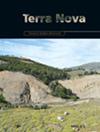秘鲁Cañete峡谷低温热年代学记录的安第斯山脉中西部通过渐新世至中新世熔结凝灰岩爆发的埋藏
IF 1.7
3区 地球科学
Q2 GEOSCIENCES, MULTIDISCIPLINARY
引用次数: 0
摘要
本文章由计算机程序翻译,如有差异,请以英文原文为准。
Burial in the western Central Andes through Oligocene to Miocene ignimbrite flare‐ups recorded by low‐temperature thermochronology in the Cañete Canyon, Peru
Thermochronological data are essential to constrain thermal and exhumation histories in active mountain ranges. In the Central Andes, bedrock outcrops are rare, being blanketed by widespread late Palaeogene–Neogene and younger volcanic formations. For this reason, the exhumation history of the Western Cordillera (WC) in the Peruvian Andes has only been investigated locally along the mountain range. Dense thermochronological data are only available in canyons of the Arequipa (16° S) and Cordillera Negra regions (10° S). We present new apatite (U‐Th)/He and fission‐track data from the 1 km deep Cañete Canyon (13° S), where the Oligo‐Miocene deposits are preserved lying conformably on an Eocene palaeo‐topographic surface. Thermal modelling of thermochronological data indicate that the 30–20 Ma ignimbrite deposits overlying the bedrock were thick enough to cause burial reheating. We demonstrate that burial associated with thick volcanic formations should be taken into account when interpreting thermochronological data from the WC or in similar volcanic‐arc settings.
求助全文
通过发布文献求助,成功后即可免费获取论文全文。
去求助
来源期刊

Terra Nova
地学-地球科学综合
CiteScore
4.80
自引率
8.30%
发文量
59
审稿时长
2.3 months
期刊介绍:
Terra Nova publishes short, innovative and provocative papers of interest to a wide readership and covering the broadest spectrum of the Solid Earth and Planetary Sciences. Terra Nova encompasses geology, geophysics and geochemistry, and extends to the fluid envelopes (atmosphere, ocean, environment) whenever coupling with the Solid Earth is involved.
 求助内容:
求助内容: 应助结果提醒方式:
应助结果提醒方式:


